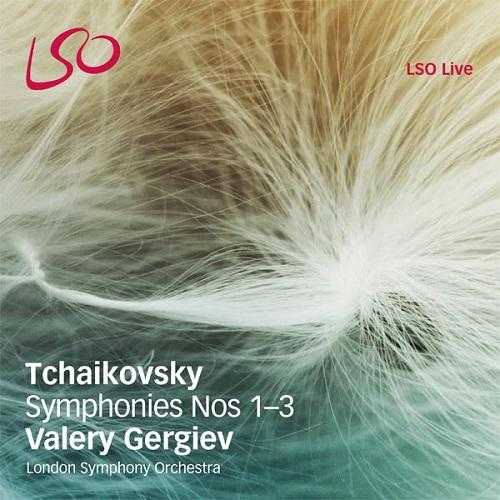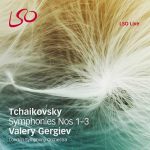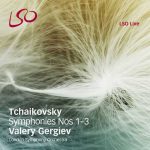
Composer: Pyotr Il’yich Tchaikovsky
Orchestra: London Symphony Orchestra
Conductor: Valery Gergiev
Audio CD
Number of Discs: 1
Format: FLAC (tracks)
Label: LSO
Size: 1.13 GB
Recovery: +3%
Scan: yes
01. Symphony No 1 i Allegro tranquillo
02. Symphony No 1 ii Adagio cantabile ma non tanto
03. Symphony No 1 iii Scherzo Allegro scherzando giocoso
04. Symphony No 1 iv Finale Andante lugubre – Allegro maestoso
05. Symphony No 2 i Andante sostenuto – Allegro vivo
06. Symphony No 2 ii Andantino marziale quasi moderato
07. Symphony No 2 iii Scherzo Allegro molto vivace
08. Symphony No 2 iv Finale Moderato assai – Allegro vivo
09. Symphony No 3 i Introduzione e Allegro Moderato assai
10. Symphony No 3 ii Alla tedesca Allegro moderato e semplice
11. Symphony No 3 iii Andante elegiaco
12. Symphony No 3 iv Scherzo Allegro vivo
13. Symphony No 3 v Finale Allegro con fuoco
Whilst Gergiev’s distinguished musical career has never been in doubt, Tchaikovsky was initially not so fortunate. Becoming a composer in 1860s Russia was not an easy path, and Tchaikovsky was originally destined for the civil service. Moreover, as an aspiring young composer he was poised between the western classical music tradition and the earthier, folk-inspired one of his native land. If finding his way to a musical career was hard enough, how was he to develop his own compositional language between competing interests?
The symphonies on this disc chart Tchaikovsky’s journey from a conscientious explorer of classical structures to someone altogether freer and more inventive, via the attractive nationalism of Symphony No 2 (the ‘Little Russian’). By the third symphony – a five-movement work lasting nearly fifty minutes – Tchaikovsky has fused folk impulses and dance-like episodes within a larger, more reflective structure. The result is both joyous and convincing. The riddle has been solved.
The lyricism of Tchaikovsky ballet scores pervades all three symphonies, but melodic ideas are subjected to a great deal more rigour – such as intense contrapuntal development (in the final movement of the first symphony) and endless thematic reworkings (eg the third movement of No 2). The composer’s inventive approach to orchestration is remarkable, too. In retrospect it does not seem entirely tragic that the vast Russian civil service did without this particular recruit.
And the interpreter? Having found his way to St Petersburg a century after Tchaikovsky, Gergiev has become almost synonymous with the place, closely associated with its musical traditions and intensely proud of them, too. But as a global musical figure he is always suspended somewhere between east and west, not unlike the young Tchaikovsky himself. Who better to guide us through the composer’s first essays in symphonic form? Gergiev’s adopted orchestra gives a full-blooded performance and the LSO strings appear to have become naturalised Russians under his direction. These are compelling accounts by any standards.



